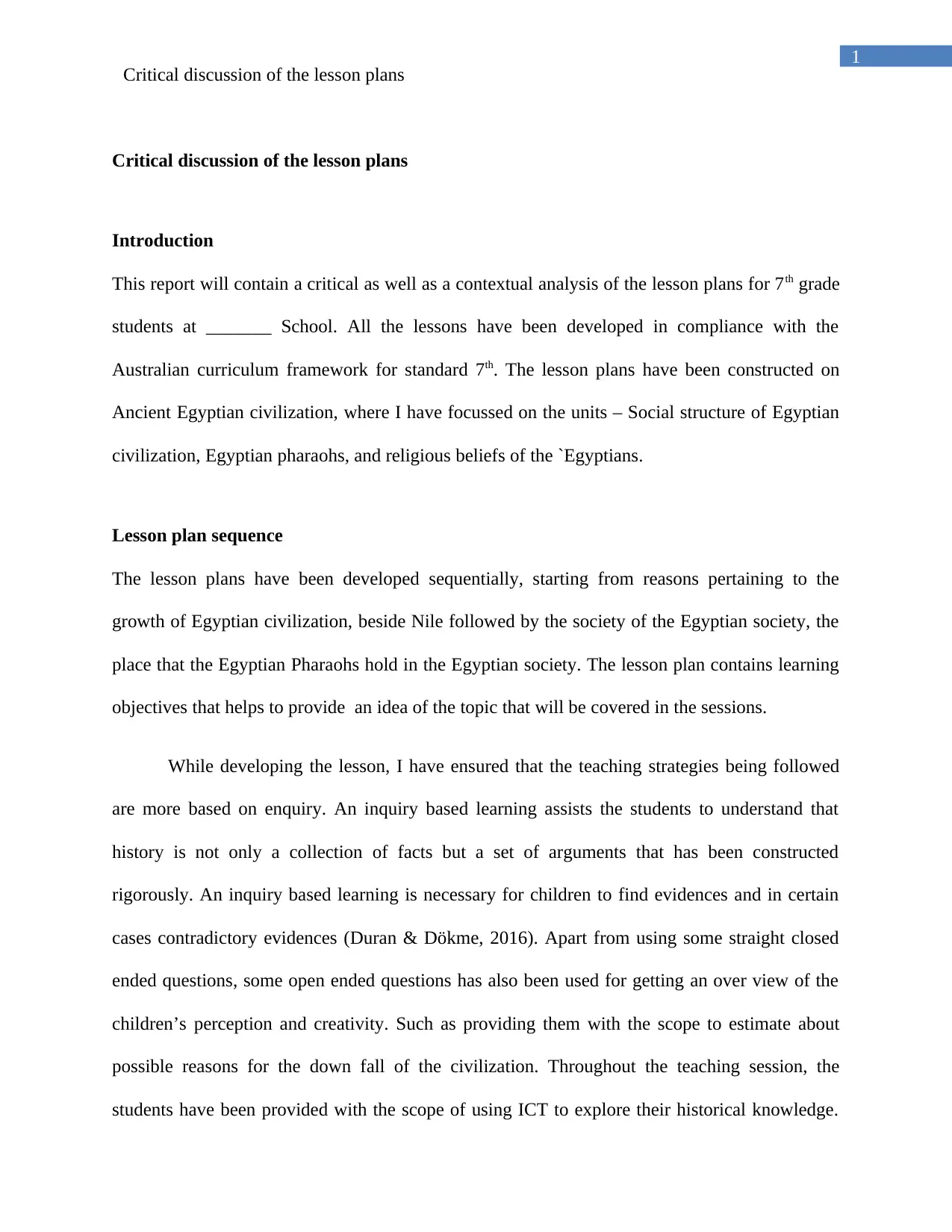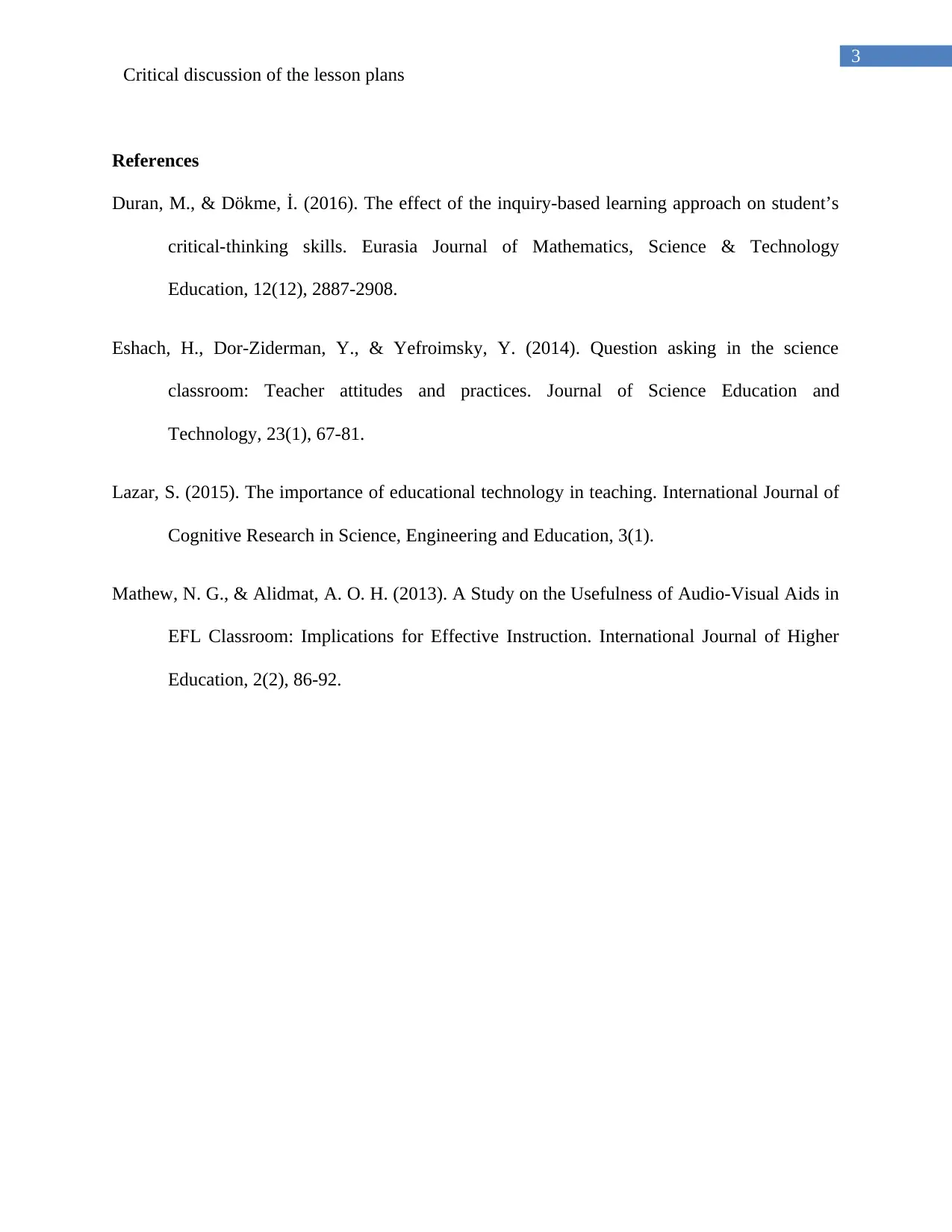Critical Discussion: Lesson Plans for Ancient Egypt, Year 7, History
VerifiedAdded on 2022/09/14
|4
|791
|22
Report
AI Summary
This report presents a critical analysis of lesson plans designed for 7th-grade students studying Ancient Egyptian civilization, aligning with the Australian curriculum. The analysis encompasses three key units: the social structure of Egyptian civilization, Egyptian pharaohs, and the religious beliefs of the Egyptians. The lesson plans are structured sequentially, starting with the geographical context of the civilization's growth and progressing to societal structures and the role of pharaohs. The teaching methodology emphasizes inquiry-based learning to encourage critical thinking and the understanding that history involves constructing arguments. The plans incorporate both open-ended and closed-ended questions, along with the integration of ICT tools for research and visual aids to enhance student engagement and retention. The report also includes a section focusing on the needs of individual learners, followed by the detailed lesson plans, including learning outcomes, assessment strategies, and teaching procedures, along with a critical evaluation of the lesson plans' effectiveness. The report concludes with references to relevant academic sources.
1 out of 4











![[object Object]](/_next/static/media/star-bottom.7253800d.svg)